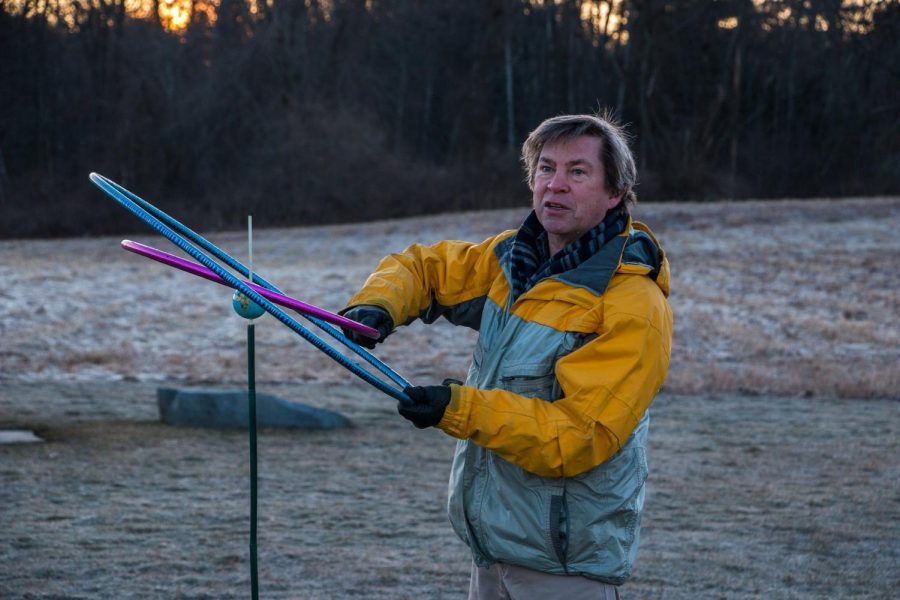At 7:15 a.m. on Tuesday, March 3, a handful of people watched the Vernal equinox sunrise at the campus Sunwheel, just south of McGuirk Alumni Stadium.
Led by Stephen Schneider, head of the Astronomy department at the University of Massachusetts, the event began at 6:45 a.m. Another sunset viewing was held from 6-7 p.m.
“Today is the equinox, which is the day of the year the sun is crossing the celestial equator, which means if you live on the equator the sun is passing straight overhead at noon today,” Schneider said. “For us, that means the sun…is rising due east and setting due west, or very close to it.”
Schneider also explained how this happens only twice a year, during the equinoxes in March and September.
“The rest of the year the sun is either rising north of the due east or south of due east and spans the big range that you see at the Sunwheel,” he said.
People who stood at the “special spot,” the center of four stones in the middle of the wheel, could see the sun rising straight up through the two stones marking the east.
As he watched the sunrise, Schneider demonstrated how the earth and moon orbit around the sun with their different tilts while explaining the seasonal positions of the earth, moon and sun. He also answered solar system and astronomy-related questions and chatted with attendees about past eclipses.
A sunwheel, according to The UMass Sunwheel site is, “an outdoor stone circle whose standing stones line up with the locations on the horizon of the rising and setting sun at the times of the solstices and equinoxes.” Natural calendars like the sunwheel have been around since ancient times.
One of the most well-known sunwheels is Stonehenge.
The Sunwheel was created and designed by the late Professor Judith Young, of the astronomy department. Schneider explained how the process to obtain permission to build the sunwheel—as well as the construction itself—was long and slow. The Sunwheel was first constructed using wooden stakes; small stones were added later.
“In the early 1990s, she [Young] thought this would be a great teaching tool for learning about how the sun and different objects in the solar system shift positions from our point of view on earth,” Schneider said.
In 1999, Young won a grant from the National Science Foundation, allowing her to purchase the large rocks that are currently standing today.
According to a Collegian archive, Young “wanted to get bigger stones, so that the Sunwheel would be accessible even during the winter, when the ground was covered in snow, and so that the wheel would reach closer to the horizon, allowing visitors an easier way to see their relationship with the sky.”
Schneider said that about eight or nine years ago, Young became ill with cancer. Because she was unable to run the events, Schneider started filling in for her. He has run the events ever since.
“She had set up this wonderful place and we keep the tradition going by having these events,” Schnieder said.
Events like this are held four times a year, the two equinoxes and the two solstices, each for sunrise and sunset, respectively. The volume of attendance varies, from over a hundred people to just one or two coming to join Schnieder.
Amherst resident Tara Borgilt said the sunrise was “beautiful.”
“I want to do something a little bit different and exciting, and I like having something with other people that makes the time of the year, even if it’s strangers,” Borgilt said.
Borgilt has attended other events throughout the years and plans to come back in June for the summer solstice, which will mark the end of spring and the beginning of summer.
“It’s a super cool thing to have something that’s always open…There’s just so few things that have the same intention and same speech, in a way, that’s open different times of the year,” she said. “I think that’s really interesting to experience the different weather and see who shows up.”
Abigail Charpentier can be reached at [email protected] and followed on Twitter @abigailcharp.




















